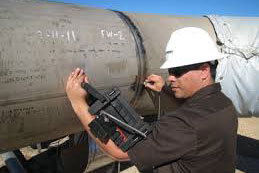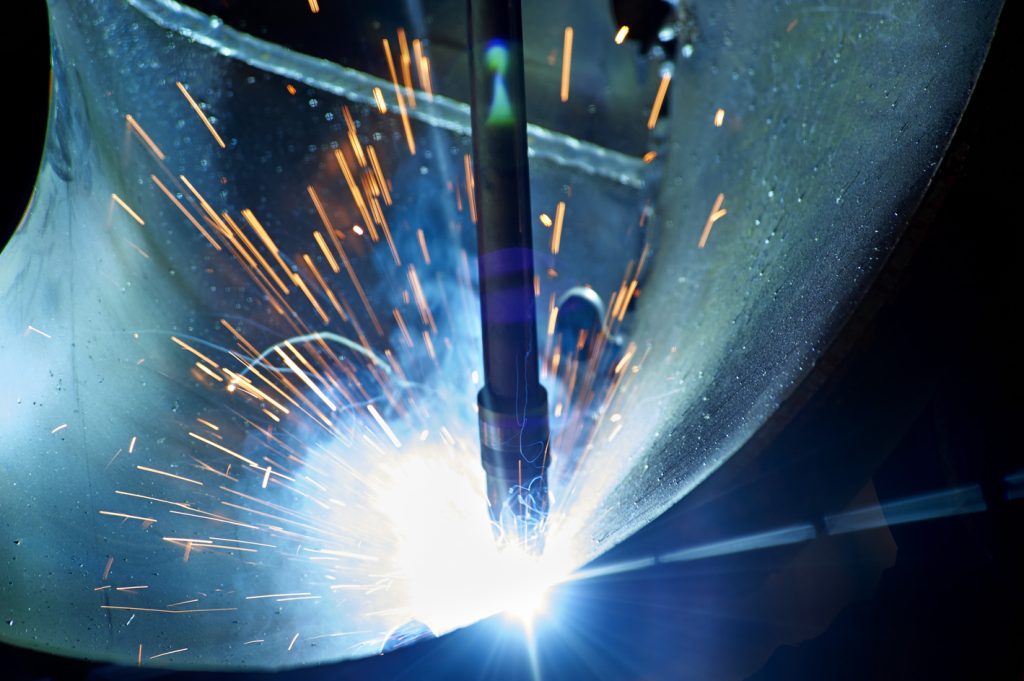The Effect of Extensive Welding Examination on Sector Requirements: Supporting Safety, Reliability, and Conformity Throughout Different Industries
The duty of rigorous welding inspection is progressively recognized as a crucial element in enhancing market requirements, where compliance, safety, and integrity take precedence throughout diverse fields. By guaranteeing conformity to established standards, such as those stated by AWS and ISO, these assessments not just mitigate risks however additionally cultivate a sense of accountability among experts. As markets progress and encounter new difficulties, the ramifications of these techniques might prolong past plain conformity. What makeovers might we anticipate in welding approaches as the need for quality and safety and security heightens?
Significance of Welding Inspections
Identifying the important role of welding assessments in preserving quality and safety requirements, sector professionals focus on these analyses to ensure architectural stability. Welding examinations work as a vital checkpoint in the fabrication process, determining problems that might endanger the toughness and safety of welded frameworks. By methodically examining welds, assessors can discover issues such as incomplete infiltration, porosity, and fractures, which might not show up to the naked eye.
The value of these examinations expands past mere compliance; they are important for securing lives and securing investments. In crucial markets such as construction, aerospace, and production, a single faulty weld can bring about tragic failings, resulting in both economic loss and human casualties. Consequently, implementing extensive assessment procedures alleviates these risks and boosts general job integrity.
Furthermore, constant welding evaluations promote a society of high quality throughout companies, urging welders to adhere to finest practices and maintain high standards in their work. This dedication to top quality not only boosts functional effectiveness however likewise strengthens the track record of business within their respective markets. Thus, welding examinations are vital in promoting security, integrity, and compliance throughout various industries.
Key Industry Requirements and Regulations
The structure of welding inspections is underpinned by a robust set of industry standards and regulations that control techniques across numerous industries. Trick organizations, such as the American Welding Culture (AWS) and the International Organization for Standardization (ISO), establish standards that ensure quality and safety and security in welding procedures. AWS D1.1 describes vital requirements for welding steel structures, while ISO 3834 specifies top quality demands for blend welding.
Along with these details criteria, sector laws like the American National Criteria Institute (ANSI) and Occupational Safety and Wellness Administration (OSHA) requireds even more enhance compliance by setting safety methods and functional finest methods. These guidelines are critical in industries such as manufacturing, aerospace, and building and construction, where welding stability is paramount.
Moreover, sector-specific requirements, such as those from the American Society of Mechanical Engineers (ASME) for stress vessels, provide additional layers of analysis to ensure that welds satisfy strict security and efficiency standards. Adherence to these standards not only promotes regulative compliance yet also promotes a society of quality and dependability throughout the welding market, ultimately protecting public well-being and boosting functional efficiency.

Advantages of Conformity and Dependability
Consistently adhering to industry requirements and policies in welding inspections returns substantial advantages, improving total reliability and performance. The leading advantage is the guarantee of top quality in bonded joints, which straight adds to the security of structures and tools. Conformity with recognized standards minimizes the threat of failure and disastrous events, consequently shielding both human life and have a peek here important assets.
In addition, organizations that focus on strenuous welding assessments foster a culture of responsibility and professionalism. This dedication not just strengthens the credibility of the company but also instills self-confidence in clients and stakeholders concerning the honesty of product or services. Trustworthy welding processes cause lowered costs connected with rework, repair services, and potential legal liabilities originating from poor craftsmanship.
In addition, maintaining compliance with sector requirements promotes smoother governing interactions, as organizations can easily demonstrate adherence to essential procedures (Welding Inspection Gilbert Arizona). This aggressive method can result in useful collaborations and chances within the industry, along with access to brand-new markets
Obstacles in Welding Inspection
Browsing the complexities of welding evaluation provides a myriad of challenges that can prevent conformity with industry criteria. The absence of standard training for examiners can result in varied interpretations of inspection standards, which might endanger security and dependability.
Another obstacle depends on the availability of innovative inspection devices - Welding Inspection Gilbert Arizona. While modern technologies such as ultrasonic screening and radiography can enhance discovery abilities, their execution may be restricted by cost or accessibility, specifically in smaller operations. This difference can lead to a dependence on less reliable evaluation methods, boosting the risk of unseen flaws
Additionally, the busy nature of modern-day production commonly stress examiners to prioritize rate over thoroughness, image source potentially neglecting essential problems. Last but not least, regulative conformity can be intimidating due to the advancing nature of sector criteria, leaving organizations struggling to stay on par with the most up to date requirements. These difficulties demand constant improvement in inspection techniques to make sure the integrity of welded structures throughout numerous sectors.
Future Trends in Welding Practices
Arising technologies and advancing techniques are established to transform welding techniques in the coming years. Improvements in automation, such as robot welding systems, are getting grip, enhancing accuracy and performance while lessening human error. These systems will not just accelerate production but additionally promote constant high quality control, attending to some of the obstacles dealt with in hands-on welding.
Additionally, the combination of synthetic intelligence (AI) and machine knowing into welding processes is poised to transform examination and surveillance. Real-time information analytics will certainly allow anticipating upkeep, permitting proactive interventions that reduce downtime and increase safety. Furthermore, boosted fact (AR) and digital truth (VR) innovations are coming to be instrumental in training welders, offering immersive experiences that improve skill advancement without the dangers connected with typical approaches.
Sustainability is also a vital fad, as industries seek greener practices. The adoption of green materials and techniques, alongside energy-efficient equipment, will likely become typical. As markets adjust to these modifications, the emphasis will shift towards higher conformity with safety and security and environmental regulations, ensuring that welding methods not only satisfy existing requirements however also lead the way for a more secure and more sustainable future.

Final Thought
In verdict, strenuous welding evaluations substantially improve sector requirements by guaranteeing security, reliability, and conformity throughout different markets. As sectors proceed to focus on functional stability, the relevance of complete inspections will just enhance, inevitably benefiting businesses and society at big.
The function of extensive welding assessment is increasingly acknowledged as an see here essential part in boosting industry requirements, where safety, conformity, and integrity take precedence throughout varied sectors. Therefore, welding inspections are indispensable in advertising security, dependability, and conformity throughout different markets.
Key institutions, such as the American Welding Society (AWS) and the International Organization for Standardization (ISO), develop guidelines that make sure quality and safety and security in welding procedures. AWS D1.1 lays out important demands for welding steel frameworks, while ISO 3834 specifies quality demands for fusion welding.
In verdict, extensive welding inspections substantially improve sector standards by guaranteeing safety, integrity, and compliance throughout numerous sectors.
Comments on “Browsing Welding Inspection Gilbert Arizona: Necessary Insights for Sector Professionals”